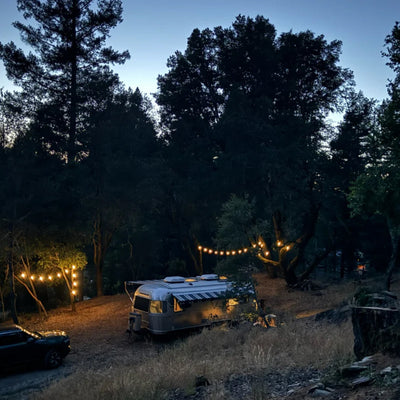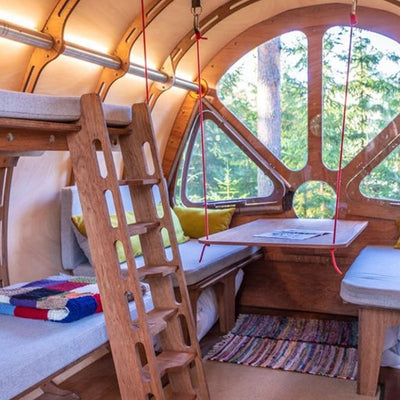Glamping in Montana: How to Set Up a Luxe Campground in Big Sky Country
Montana’s nickname, "Big Sky Country," sums up its appeal perfectly—wide-open spaces, rugged mountains, and natural wonders like Glacier and Yellowstone National Parks. It’s a dream setting for glamping, where you can blend the raw beauty of the outdoors with a touch of luxury. With just over a million people scattered across the fourth-largest state in the U.S., there’s ample room to create something unique. The demand for upscale outdoor escapes is growing fast, and a glamping campground could be your way to cash in. Before you start imagining cozy tents under starry skies, let’s dive into what it takes—especially the specific regulations you’ll need to tackle in Montana.
Picking the Perfect Spot
Finding the right location is your starting point, and Montana’s full of possibilities. If you’re after steady tourist traffic, setting up near Glacier or Yellowstone could be the move—think towns like West Yellowstone or Whitefish, where visitors show up year-round. Or maybe you’re picturing a quieter retreat, nestled in a mountain valley or by a forested lake with stunning views. Accessibility matters; guests love a smooth drive, so paved roads give you an edge. The spot should feel like Montana at its core—big skies, maybe a distant moose or elk (safely managed)—but where you land ties directly into the rules you’ll face.

Navigating Montana’s Glamping Regulations
Montana’s regulations can feel like a puzzle, and they’re non-negotiable. At the state level, any short-term rental—tents, yurts, or cabins rented for less than 30 days—needs a Public Accommodation License from the Montana Department of Public Health and Human Services. This isn’t just a formality; it’s about proving your site’s safe and sanitary. You’ll need potable water (tested and approved), a solid wastewater system (like septic or composting toilets), and clean amenities—fresh bedding and a way for guests to wash up. It’s $40 a year to apply, and a county sanitarian will likely check things out. Skip it, and you’re looking at fines up to $500 per violation, or even a suspended license. That’s your starting line.
Pictured Below: Some Fuselage Glamping Pods touching down in Montana
Local rules pile on more, and they vary by area. In Bozeman, a hotspot near Yellowstone with a big outdoor crowd, short-term rentals got a major crackdown starting in 2017. As of December 2023, new non-owner-occupied rentals (called Type 3) are banned unless they were locked in before the cutoff. If you’re on-site, you can still run a Type 1 or Type 2 rental—like a yurt where you’re present—but you’ll need to register with the city for $250 a year and pass a one-time fire and health inspection (around $500). Whitefish, near Glacier, has its own playbook: glamping’s only allowed in zoning districts like WB-3 or WRR-1, and you’ll need a Short-Term Rental Permit plus a business registration. They’re tough on enforcement too—hundreds of rentals lack permits, and they’ve got staff hunting violators. Rural counties might be lighter on rules, but don’t guess; check zoning with the county planning office to stay safe.
Handling Taxes and Fees
Taxes are another must-do. Montana hits short-term rentals with two lodging taxes: a 4% Lodging Facility Use Tax and a 4% Lodging Sales Tax, totaling 8% on the full booking price—base rate, cleaning fees, everything—for stays under 30 days. Big platforms like Airbnb often collect these for you, but if you’re booking direct or using other sites, you’ll file with the Montana Department of Revenue yourself. Some places, like Whitefish, add a local resort tax too, which means monthly reporting on your part. Mess this up, and penalties stack up quick—keep it tight.
Pictured Below: A modern tiny cabin's kitchen in the Fuselage
Building Your Campground
Once the legal stuff’s handled, building your site is where it gets exciting, but Montana’s weather demands toughness. Structures need to handle freezing winters and warm summers—think yurts, safari tents, or tricked-out cabins. If you’re near utilities, hooking up to water and power simplifies things; otherwise, off-grid setups with solar panels and wells bring that rugged appeal guests love. Here’s where you can add some flair:
- Fire pits for cozy nights.
- A fenced spot for dogs to roam.
- Heat or wood stoves to keep it comfy year-round.
Making It Stand Out
What’s going to make your place special? Montana’s wild, free spirit is your edge. Picture guests stargazing under that massive sky or fishing in a nearby stream. Team up with local guides for hikes or decorate with handmade Montana touches. Near ski slopes, winter bookings could take off; by a lake, summer’s your season. It’s about mixing luxury with that untamed outdoor feel.
Fuselage Glamping Cabins in Montana Pictured Below. Great in cold weather.
Getting the Word Out and Crunching the Numbers
Marketing’s easy—list on platforms where outdoor fans search for spots near Bozeman or Kalispell. Highlight what’s close—like “minutes from Glacier”—and let your photos sell it. Price it at $100 to $300 a night, depending on what you offer, and you’re in the game.
Money’s the big picture. Land near the parks might run $50,000 to $200,000 for a good chunk, and outfitting it—tents, utilities, all that—could add $50,000 to $100,000. Charge $150 a night, keep half your 10 units booked (more in summer, less in winter), and you’re looking at $50,000 to $75,000 a year. Tourism peaks May to September, so that’s your hot stretch. Start small—a few units to test it—then grow as it takes off.
Pictured Below: The Birdhouse Eco-Cabin's Kitchen Setup
Montana’s glamping scene is wide open, from Glacier’s edge to Yellowstone’s doorstep. Master the regulations—state licenses, local permits, taxes—and you’re giving people a luxe taste of the wild. Want more on costs or a specific site? I’m here to dig in with you!











